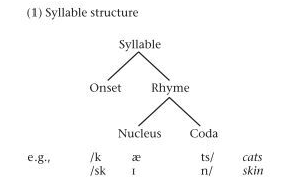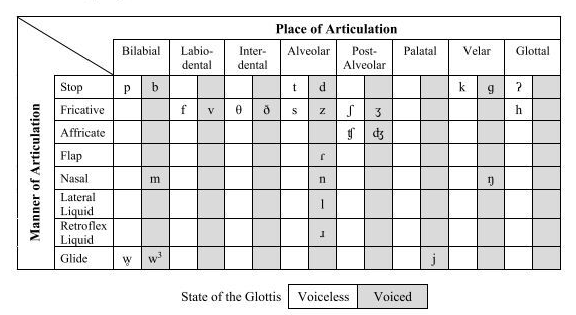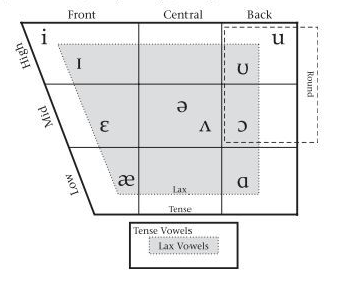Chapter 2: What is Phonetics?
- Phonetics- the study of the minimal units that make up language (sounds of speech - the consonants, vowels, melodies, and rhythms)
- Three aspects to the study of speech sounds
- Articulatory phonetics- the study of the production of speech sounds
- Acoustic phonetics- the study of the transmission and the physical properties of speech sounds
- Auditory phonetics- the study of the perception of speech sounds
Representing Speech Sounds
Impressionistic phonetic transcription- a method of writing down speech sounds in order to capture what is said and how it is pronounced
- the simplest and most basic method of phonetic analysis
- the “normal” spelling of a word doesn’t tell us enough about how it is pronounced by different people
- Spelling symbolizes the word that is meant, rather than how it is pronounced
Co-articulation- the influence of one sound on a neighboring sound
This book uses the International Phonetic Alphabet (IPA) for phonetic transcription
- IPA symbols only represent the sounds of language
Segments- the discrete units of the speech stream that can be divided into consonants and vowels
- Consonants- produced with a constriction somewhere in the vocal tract that impedes airflow
- Vowels- have at most only a slight narrowing and allow air to flow freely through the oral cavity
- Monophthongs- simple vowels composed of a single configuration of the vocal tract
- Diphthongs- complex vowels composed of a sequence of two different configurations
Suprasegmental- applies to entire strings of consonants and vowels (such as stress, tone, and intonation)
Breakdown of Syllables
- Onset- any consonants that occur before the rhyme
- Rhyme- consists of the vowel and any consonants that come after it
- Nucleus- the vocalic part of the rhyme
- Coda- consists of any final consonants
- All syllables have a rhyme, but onsets are optional in some languages

Articulation: English Consonants
Articulation- the motion or positioning of some part of the vocal tract with respect to some other part of the vocal tract in the production of a speech sound
When describing a consonant, it is necessary to provide information about three different aspects of its articulation:
- Is the sound @@voiced or voiceless@@?
- @@Where@@ is the airstream constricted?
- @@How@@ is the airstream constricted?
Segmental features- the voicing, place, and manner of articulation
Three basic components of the human anatomy that are involved in the production of speech
- Larynx- contains the vocal folds and glottis; located in the throat at the Adam’s apple
- Vocal tract- located above the larynx, which is composed of the oral and nasal cavities
- Subglottal system- part of the respiratory system located below the larynx
Voiceless sounds- sounds made without such vibration
Voiced sounds- sounds made with the vocal folds vibrating
Bilabial consonants- made by bringing both lips close together
- [p], [b], [m], [w], [w̩]
Labiodental consonants- made with the lower lip against the upper front teeth
- [f], [v]
Alveolar sounds- made with the tongue tip at or near the front of the upper alveolar ridge
- [t], [d], [s], [z], [n], [r], [l], [ɹ]
Post-alveolar sounds- made with the front of the tongue just behind the alveolar ridge, right at the front of the hard palate
- [ʃ], [ʒ], [tʃ], [dʒ]
Palatal sounds- made with the body of the tongue near the center of the hard portion of the roof of the mouth
- [j]
Velar consonants- produced with the back part of the tongue body raised near the velum, also known as the soft palate
- [k], [g], [ŋ]
Glottal sounds- produced when air is constricted at the larynx
- [h], [ʔ]
Stops- made by obstructing the airstream completely in the oral cavity
Fricatives- made by forming a nearly complete obstruction of the vocal tract
Affricates- made by briefly stopping airstream completely and then releasing the articulators slightly so that frication noise is produced
Nasals- produced by relaxing the velum and lowering it, thus opening the nasal passage to the vocal tract
Approximants- involve constriction of the vocal tract, but the constrictions are not narrow enough to block the vocal tract or cause turbulence
Liquids- formed with slightly more constriction than glides, and their quality changes depending on where they occur in a word
Glides- made with only a slight closure of the articulators, and they require some movement of the articulators during production
Flap- involves the complete obstruction of the oral cavity, however, it is much faster than that of a stop
Consonant Chart

Articulation: English Vowels
Low vowel- pronounced with the jaw opened and the tongue body away from the roof of the mouth
- [æ] [a]
Mid vowel- produced with an intermediate tongue height
- [ɛ], [ʌ], [ɔ]
High vowel- pronounced with the tongue body close to the roof of the mouth
- [i], [ɪ], [u], [ʊ]
Front vowel- pronounced by pushing the body of the tongue forward
Back vowel- pronounced by raising the body of the tongue in the back of the mouth
Tense vowels- have more extreme positions of the tongue and/or the lips
Lax vowels- require less extreme gestures, movements, and/or raisings
Vowel Chart

Suprasegmental Features
- Identified by comparing different segments and different utterances to see what the features are
- can influence the meanings of words and sentences
- Length- the varying duration of a segment
- Intonation- the pattern of pitch movements across a stretch of speech
- Intonation contours are marked by pitch accents and phrase tones
- Pitch accents usually involve a change in a fundamental frequency in the middle of an utterance
- Phrase tones affect the overall meaning of an utterance at the end of an utterance, and group words into phrases
- Typically distinguishes between a statement at the question
- Tone- the pitch at which the syllables in a word are pronounced
- Stress- the level of prominence of a syllable
The Phonetics of Signed Languages
There are five key parameters of articulation in signed languages
- Place of articulation/location
- Movement
- Handshape
- Hand orientation
- Non-manual markers